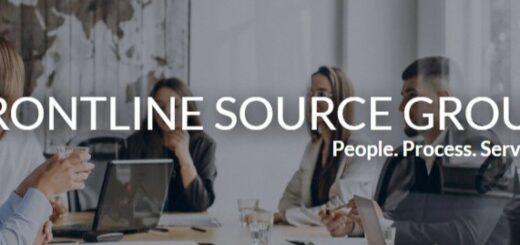The 30% Rule: What U.S. DOL Bad-Hire Costs Mean for Your P&L—and How to Prevent Them
Comprehending the 30 Percent Rule: U. A. The 30 percent rule, as stated by the U.S. Department of Labor, is one idea that frequently comes up when discussing hiring. Please fill out our employer request form to Hire the best candidates for your team.
Key Takeaways
- The U.S. Department of Labor’s 30% rule calculates the cost of a bad hire, including recruitment, training, and salary expenses.
- Bad hires can significantly impact a company’s profit and loss, leading to decreased productivity, increased turnover, and potential damage to the company’s reputation.
- Tangible costs of bad hires include recruitment and training expenses, while intangible costs include decreased morale and productivity among existing employees.
- Implementing hiring best practices and screening techniques can help prevent bad hires, such as conducting thorough interviews and background checks.
- Investing in employee training and development can lead to higher job satisfaction, increased productivity, and reduced turnover rates.
S. . Labor Department. According to this rule, the expense of a poor hire may reach 30% of the worker’s first year’s salary. A clear reminder of the financial ramifications of hiring decisions is provided by this statistic. Upon reflection, it is evident that the consequences go beyond monetary loss; they can also impact team dynamics, productivity, and the organization’s general morale.
Being aware of this rule forces us to examine our hiring procedures more thoroughly. A poor hire could cost us $15,000 in lost productivity, hiring costs, and training expenses if we take into account an employee earning $50,000 per year. This amount doesn’t even include the intangible expenses, like the effect on team cohesiveness and the possible loss of clients or customers as a result of subpar work.
We can more fully understand the significance of making well-informed hiring decisions that support our organizational objectives once we acknowledge the weight of this statistic. The Effect on Your Profit and Loss: How Poor Hiring Impacts Your Bottom Line Poor hiring decisions have significant and varied financial repercussions. Not only can a poor hire result in immediate expenses, but it can also have a domino effect on our profit & loss statements.
Peer productivity may suffer, for example, if a worker performs poorly because they may have to make up for their colleague’s shortcomings. This may lead to a poisonous workplace where dissatisfaction and disengagement are common, which will eventually hurt our bottom line. Also, poor hiring practices may result in higher turnover rates, which exacerbates our financial problems. Recruiting and training new hires can quickly become expensive, leading to an unstable cycle that is hard to escape.
Looking at our profit and loss statements makes it clear that investing in good hiring practices is a strategic imperative that can greatly improve our financial health rather than just being an operational necessity. Determining the Costs of Bad Hires: Determining the difference between tangible and intangible expenses is crucial when examining the costs related to bad hires. Tangible costs are those that are simple to measure, like lost productivity, training costs, and hiring fees. For instance, we face an immediate financial loss of $8,000 if we invest $5,000 in hiring and an additional $3,000 in training a worker who eventually fails. These numbers can be concerning, particularly when added up over a number of poor hires.
Conversely, intangible costs can be just as harmful but are frequently harder to measure. These could include a decline in team cohesiveness, a decline in employee morale, and harm to our company’s image. It can cause discontent among current employees when we hire someone who does not fit in with our company culture or who does not live up to performance standards. Our overall performance & profitability are ultimately impacted by this discontent, which can show up in a number of ways, such as decreased engagement and productivity. Effective Hiring Strategies & Best Practices We must implement hiring strategies and best practices to reduce the risks associated with bad hires.
Gaining a comprehensive grasp of the abilities and qualities needed for every role in our company is one of the most important phases in this process. We can attract candidates who are more likely to succeed in their roles by crafting thorough job descriptions that specify precise requirements and expectations. Also, employing thorough screening methods can greatly improve our hiring procedure. Conducting in-depth interviews that evaluate soft skills and cultural fit in addition to technical skills may be one way to achieve this.
By asking behavioral interview questions, we can learn more about candidates’ past problem-solving techniques and assess their likelihood of succeeding in our company. Incorporating job-related tests or assessments can also assist us in identifying applicants who have the requisite skills. The Function of Training and Development: Putting Money Into Employee Success After hiring new employees and successfully navigating the hiring process, it is essential to devote resources to their continuous training and development. Having thorough onboarding programs guarantees that new hires are prepared for success in their positions & feel accepted. When it comes to employee performance and retention, this initial investment may yield benefits.
Long-term success also depends on cultivating a culture of ongoing learning. By providing professional development opportunities, like workshops, mentorship programs, or online courses, we enable our staff members to develop their abilities and progress their careers within our company. This improves worker engagement and motivation in addition to improving individual performance. Making Better Hiring Decisions with Technology and Data In the current digital era, technology is essential to improving our hiring procedures. We can choose candidates with greater knowledge if we use data-driven tools & platforms.
By managing applications and enabling communication with candidates, applicant tracking systems (ATS) can help us expedite our hiring process. Also, applying data analytics can give us insightful information about our hiring procedures. We can spot patterns & areas for development by examining metrics like time-to-hire, candidate sources, and turnover rates. We are able to continuously improve our strategies & make changes according to what is most effective for our company thanks to this data-driven approach. Establishing a Positive Company Culture: Promoting a Successful Environment Top talent attraction and retention depend heavily on a positive company culture. Employees feel appreciated and inspired to put forth their best work when we foster an atmosphere that values cooperation, diversity, and open communication.
This culture is a strong recruiting tool in addition to improving employee satisfaction. We must put employee engagement and well-being first in order to promote this positive culture. We can better understand the needs and concerns of our employees by routinely asking for feedback through surveys or one-on-one meetings. We show our dedication to fostering a positive work environment that promotes development and achievement by taking proactive measures to address these problems.
The Value of Continuous Improvement: Assessing and Modifying Your Hiring Procedures When it comes to our hiring procedures, it is imperative that we adopt a mindset of continuous improvement. Assessing our hiring practices on a regular basis enables us to determine what is effective and what requires modification. We can stay flexible in a labor market that is continuously evolving thanks to this iterative approach. We can learn a lot about the efficacy of our procedures by asking hiring managers and new employees for their opinions.
Also, we can modify our strategies in accordance with industry trends & best practices by keeping ourselves updated. In the end, by resolving to consistently enhance our hiring procedures, we set ourselves up for long-term success in creating a skilled and motivated workforce. In conclusion, any organization hoping to succeed must comprehend the costs related to poor hires. We can drastically lower the risks associated with poor hires while improving the performance of our entire organization by putting in place efficient hiring practices, funding staff training, utilizing technology, cultivating a positive culture, and making a commitment to ongoing improvement.
In the article “The 30% Rule: What U.S. DOL Bad-Hire Costs Mean for Your P&L—and How to Prevent Them,” the focus is on understanding the financial implications of hiring mistakes and strategies to mitigate these costs. A related article that complements this discussion is “8 Certified Staffing Professionals Named,” which highlights the importance of having certified professionals in the staffing process to ensure quality hires. This article can be accessed through the following link: 8 Certified Staffing Professionals Named. By leveraging the expertise of certified staffing professionals, companies can significantly reduce the risk of bad hires and their associated costs.
Hire Today! Schedule a Meeting and Learn More
FAQs
What is the 30% Rule?
The 30% Rule refers to the estimated cost of a bad hire, as calculated by the U.S. Department of Labor. It suggests that the cost of a bad hire can be as much as 30% of the employee’s first-year earnings.
What are U.S. DOL Bad-Hire Costs?
U.S. DOL Bad-Hire Costs refer to the financial impact of hiring the wrong person for a job. This includes the costs associated with recruiting, hiring, onboarding, training, and potential loss of productivity and revenue due to the bad hire.
How can Bad-Hire Costs affect my P&L?
Bad-Hire Costs can have a significant impact on your Profit and Loss (P&L) statement. They can lead to increased expenses, decreased productivity, and lost revenue, ultimately affecting the overall profitability of the business.
What are the ways to prevent Bad-Hire Costs?
Preventing Bad-Hire Costs involves implementing effective hiring practices, such as thorough screening and interviewing processes, skills assessments, reference checks, and background checks. Additionally, providing proper training and support for new hires can help prevent costly mistakes.




